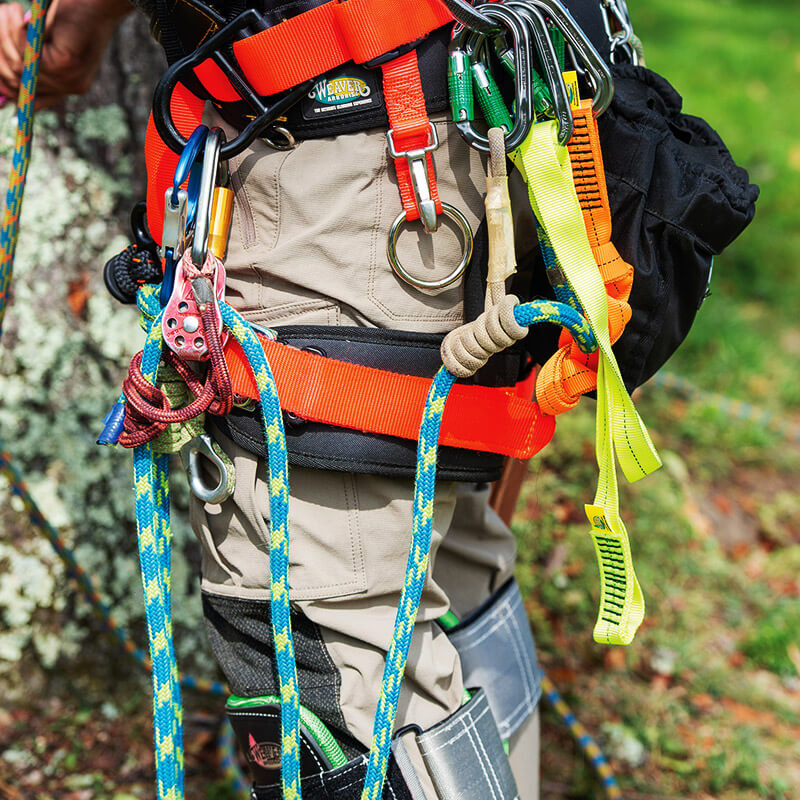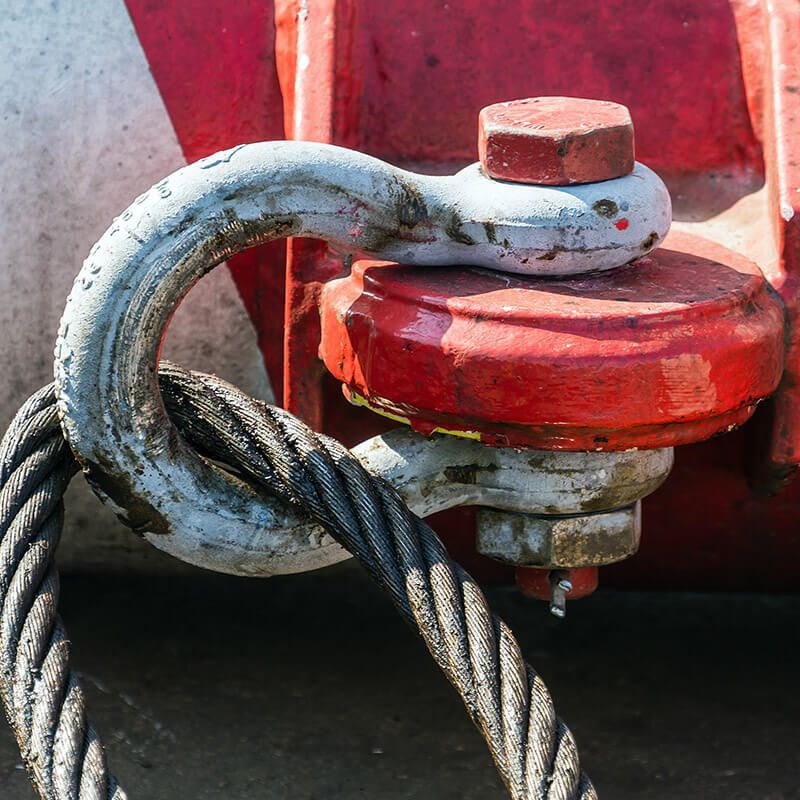How Strong Are Wire Rope Clamps?
Wire rope clamps—also called cable clamps or wire rope clips—are critical hardware for forming load-bearing eyes at the ends of wire ropes or for joining two cables together. Used across industries like construction, transportation, and marine, their strength and reliability are crucial to the safety and performance of wire rope assemblies.
Choosing the right clamp and understanding its capabilities is essential, especially for heavy-duty and professional users. Proper selection, installation, and maintenance of wire rope clamps directly impact the strength and safety of the entire assembly.
Key Takeaways
- Wire rope clamps form load-bearing eyes and join cables together.
- Forged clamps are essential for heavy-duty and professional applications; malleable clamps should not be used in critical applications.
- Fist-Grip style clamps help reduce installation errors by being symmetrical.
- Clamps are generally not recommended for overhead lifting applications.
- Proper installation and inspection are critical for safe and reliable use.
Understanding Wire Rope Clamps and Their Purpose
Wire rope clamps provide a secure, adjustable method of fastening wire rope ends without permanent fittings. They are often the only field-available solution when swaged or poured fittings are impractical or unavailable. However, the reliability of the clamp is only as good as the quality of the material and the installation practices followed.
Forged vs. Malleable Wire Rope Clamps
It’s important to distinguish between forged and malleable wire rope clamps:
- Forged Steel Wire Rope Clamps: The strongest and most reliable option, designed for heavy-duty and professional applications where safety is critical. Forged clamps undergo a manufacturing process that enhances their strength and durability.
- Malleable Iron Wire Rope Clamps: Malleable clamps are cast, not forged, and should never be used for heavy-duty, load-bearing, or critical applications. They are only suitable for light-duty, non-critical uses where safety is not at risk.
What Are "Crosby Clips"?
The term "Crosby Clips" is often used generically, much like "Kleenex" for tissues or "Velcro" for hook-and-loop fasteners. However, Crosby is an actual brand name. Crosby’s G-450 forged wire rope clips, recognized by their signature red U-bolt, have become the industry icon for quality and reliability. Many other brands manufacture wire rope clips, but not all offer the same level of quality and strength as Crosby products. At Bishop Lifting, we stock Crosby clips along with other high-quality alternatives, including galvanized and stainless steel options.
Types of Wire Rope Clamps Available
Wire rope clamps come in several material and design options, offering different levels of corrosion resistance, strength, and durability:
- Forged Carbon Steel (Galvanized): Offers high strength and good corrosion resistance for most industrial applications.
- 316 Stainless Steel: Provides excellent corrosion resistance, ideal for marine, offshore, or corrosive environments.
- Malleable Iron (Zinc-Plated): Suitable only for light-duty, non-critical applications. Not recommended for heavy loads or life-safety applications.
- Fist-Grip Style Clamps: Symmetrical design eliminates the risk of upside-down installation, making them ideal for critical applications where correct installation is paramount.
Common Applications and Industries
Wire rope clamps are used across many industries for securing wire rope assemblies. Common applications include:
- Construction: Securing wire rope during building or demolition operations.
- Rigging: Creating temporary terminations for lifting, pulling, and load control.
- Cargo Control: Securing loads during transportation to prevent shifting or falling.
Important: Wire rope clamps are generally not recommended for overhead lifting. For overhead lifting applications, professionally swaged, poured, or mechanical terminations should be used instead.
How Strong Are Wire Rope Clamps?
The strength of a wire rope clamp is typically expressed as a termination efficiency percentage. This percentage measures how much of the original wire rope’s breaking strength the assembly retains when properly installed.
- Forged wire rope clamps can achieve approximately 80% efficiency when correctly installed.
- For example, if the wire rope has a 10,000 lb breaking strength, a properly assembled clamp system would be rated for approximately 8,000 lb.
Incorrect installation, improper sizing, or failure to retighten the clamps after initial load can significantly reduce efficiency, leading to unsafe conditions.
Factors Affecting Clamp Strength and Durability
- Material Quality: Forged steel clamps offer maximum strength and longevity. Stainless steel options add corrosion resistance for harsh environments.
- Proper Installation: Always follow the "Never Saddle a Dead Horse" rule—place the saddle on the live end and the U-bolt on the dead end. Use the correct number of clips for the rope size, torque them to specification, and retorque after load is applied.
- Environmental Conditions: Exposure to corrosion, abrasion, or extreme temperatures can weaken clamps over time. Stainless steel clamps are ideal where corrosion is a concern.
Installation Tips for Maximum Strength
- Use the correct number of clamps as recommended for the rope diameter.
- Torque each clamp to manufacturer specifications.
- Retighten clamps after the first load is applied.
- Inspect clamps regularly for corrosion, wear, or loosening.
Conclusion
Wire rope clamps are essential hardware for forming temporary or adjustable wire rope terminations. Their strength and reliability depend on selecting the right type of clamp, using proper installation techniques, and conducting regular inspections. While wire rope clamps provide flexibility in the field, they are not a substitute for swaged or poured terminations in lifting applications.
At Bishop Lifting, we stock professional-grade wire rope clamps and clips from trusted brands like Crosby, Van Beest, and others. We offer galvanized and stainless steel options to meet your application needs. Browse our online inventory or contact our experienced team for expert help choosing the right clamp for your project.
FAQ
What is the typical termination efficiency of a properly installed wire rope clamp?
A properly installed forged wire rope clamp can achieve about 80% of the wire rope’s breaking strength.
What is the difference between forged and malleable wire rope clamps?
Forged wire rope clamps are strong enough for heavy-duty use. Malleable clamps are only appropriate for light-duty, non-critical applications and should never be used for lifting or safety-critical connections.
Can wire rope clamps be used for overhead lifting?
No. Wire rope clamps are generally not recommended for overhead lifting. Professionally swaged or poured terminations should be used instead.
What is a Fist-Grip clamp and why is it recommended?
Fist-Grip clamps are symmetrical, eliminating the risk of incorrect installation. They are easier to install correctly in the field and maintain high efficiency when properly tightened.
How important is proper installation torque for wire rope clamps?
Proper torque is critical. Under-tightened clamps can slip under load, while over-tightened clamps can crush the rope. Always follow manufacturer torque specifications.
What materials are commonly used for wire rope clamps?
Common materials include forged carbon steel (galvanized), stainless steel (316), and malleable iron. Stainless options provide superior corrosion resistance for marine or corrosive environments.
How often should wire rope clamps be inspected?
Wire rope clamps should be inspected regularly, especially after the initial load is applied, and periodically thereafter. Look for corrosion, deformation, and loosening.
How Strong Are Wire Rope Clamps?
May 12th 2025
What is the Main Tool That Most Arborists Must Have?
May 9th 2025
What is the difference between a rescue harness and a fall protection harness?
May 6th 2025
What is better for a winch, rope, or cable?
Apr 28th 2025
What Is Lifting Equipment Called?
Apr 25th 2025
What is the safest device to use when climbing a tree?
Apr 21st 2025
What are the five levels of fall protection?
Apr 18th 2025
What should be worn when climbing a tree?
Apr 14th 2025
What is a rigging shackle?
Apr 4th 2025










